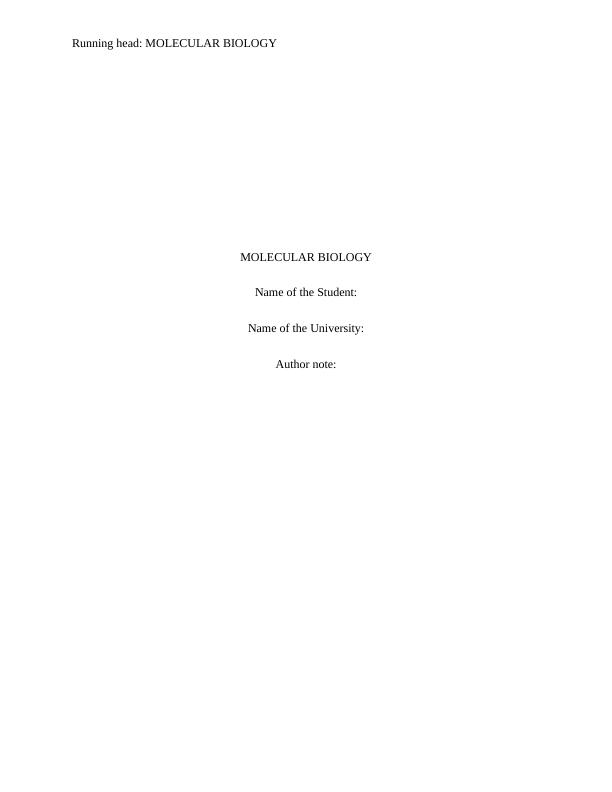Molecular Biology - Functions and Components
Added on 2022-08-11
About This Document
WRITE A SHORT REPORT (250 - 300 Words) (Including several APA citations) Concept Integration Question #1: What is the relationship between Endomembrane System, Insulin and Insulin Receptor, activation by phosphorylation, membrane-bound polyribosomes, and Glucose Transport Channels? Describe what you learned about the gut and nutrient absorption in the microscopy lab. Remember to include the relationships between the gut and nutrient absorption you learned from the Microscopy lab here in relation to the the other items listed. This is the first assignment of three related assignments. Below is the instructions for all three but only CIQ 1 applies to this current assignment. Preview of the three assignment topics and questions: Concept Integration Question #1: What is the relationship between Endomembrane System, Insulin and Insulin Receptor, activation by phosphorylation, membrane-bound polyribosomes, and Glucose Transport Channels? Describe what you learned about the gut and
Molecular Biology - Functions and Components
Added on 2022-08-11
End of preview
Want to access all the pages? Upload your documents or become a member.


